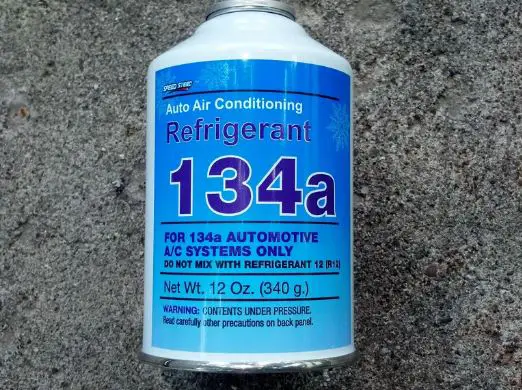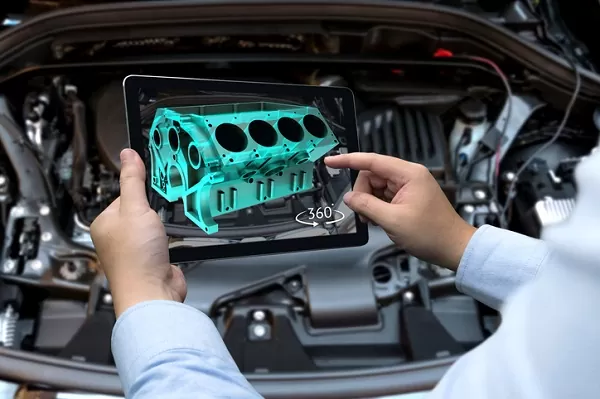If your car’s air conditioning isn’t blowing cold air like it used to, you may need more freon. The cost of replacing freon in a car can vary depending on the type of freon you need, how much is needed, and whether you do the job yourself or take it to a mechanic. In this blog post, we will discuss the cost of replacing freon in a car and answer some common questions about this process.
Let’s Take A Look!
The Purpose Of Freon In A Car
Freon is a trade name for a group of refrigerants manufactured by DuPont. Freon is used in nearly every type of car air conditioning system. The first Freon-based AC systems were introduced in the 1930s and were widely used until the early 1990s when they were phased out due to environmental concerns.
There are three main types of Freon-based AC systems: R-12, R-134a, and R-22. R-12 was the original Freon used in car AC systems. It is also known as Freon 12 or dichlorodifluoromethane (CFC-12). R-134a is a newer type of Freon that replaced R-12 in the 1990s. It is also known as Freon 134a or tetrafluoroethane (CFC-134a). R-22 is the most common type of Freon used in car AC systems today. It is also known as Freon 22 or chlorodifluoromethane (HCFC-22).
Freon is a colorless, odorless, and tasteless gas that is used as a refrigerant in air conditioning systems. It is a non-flammable, non-toxic gas that does not support combustion. When released into the atmosphere, Freon breaks down into other chemicals that can be harmful to the environment. For this reason, the production and use of Freon is regulated by the Environmental Protection Agency (EPA).
How Do You Know What Type Of Freon Your Car Uses?
Prior to 1994, most cars used Freon R-12. However, since 1994, Freon R-134a has been the refrigerant of choice in new vehicles. If you’re not sure which type of Freon your car uses, consult your owner’s manual or ask a mechanic. Chances are, if your car was manufactured after 1994, it uses Freon R-134a.
If you’re still not sure which type of Freon your car uses, there are a few ways to tell. One way is to look for the yellow sticker that should be affixed to your car’s A/C compressor. This sticker will indicate what type of refrigerant is required for your car. Another way to tell is by the appearance of the Freon itself. Freon R-134a is clear, while Freon R-12 is blue.
If you need to recharge your car’s A/C system, make sure you use the correct type of Freon. Using the wrong type of Freon can damage your car’s A/C system.
How To Know When You Need More
If your car’s air conditioning isn’t blowing cold air, it may be low on freon. Here are a few ways to tell if your car needs more freon:
1. The air coming out of the vents is warm or hot.
2. The air conditioner is running, but the air coming out of the vents is not as cold as it used to be.
3. You can hear a hissing sound coming from the air conditioner compressor.
4. There is ice or frost build-up on the air conditioner coils.
If you notice any of these signs, it’s time to have your car’s air conditioning system checked by a mechanic. They can add more freon to the system, and get it working properly again.
How Much Does It Cost To Add Freon To A Car?
The cost of adding Freon to a car can vary depending on the type of Freon you need, the amount you need, and whether you do it yourself or take it to a mechanic. The most common type of Freon, R-22, can cost anywhere from $50 to $200 per pound. R-134a is less common and can cost up to $400 per pound.
Most cars hold between two and four pounds of Freon. To replace the Freon in a car, you will need one or more containers of refrigerant (depending on the size of your car’s AC system) and an AC recharge kit that includes a pressure gauge, hoses, and fittings. These kits can be purchased at most auto parts stores and cost between $50 and $100.
If you choose to do the job yourself, you can expect to pay around $100 for the Freon, kit, and tools you need. If you take your car to a mechanic, the cost will be higher because they will also charge for labor. The average cost of adding Freon to a car at a mechanic is $200.
What Is Typically Done During A Freon Replacement?
When Freon replacement is necessary, it’s important to know exactly what needs to be done in order to properly replace the Freon. Depending on the type of car, different steps may need to be taken in order to ensure that the Freon is replaced correctly. However, there are some basic steps that are typically followed during Freon replacement.
First, the car’s engine must be turned off and allowed to cool down. Next, the hood must be opened so that the engine compartment can be accessed. Once inside the engine compartment, locate the Freon lines which will be connected to the air conditioning compressor. These lines will have caps or plugs on them which need to be removed in order to release the Freon.
Once the Freon lines have been located, use a Freon recharge kit to add Freon to the car. Make sure to follow the instructions that come with the kit carefully so that the correct amount of Freon is added. Once the Freon has been added, replace the plugs or caps on the Freon lines and close the hood. Start the car’s engine and turn on the air conditioning to test that the Freon has been replaced correctly.
How Long Does Replacing Freon Take?
The length of time that it takes to replace Freon will vary depending on the type of car and the experience of the person doing the replacement. However, in most cases, Freon replacement can be done relatively quickly. The entire process, from start to finish, typically takes no more than an hour or two.
How Long Does It Take For Car AC To Get Cold After Adding Freon?
After you add Freon to your car’s AC system, it will take a few minutes for the system to start blowing cold air. The amount of time it takes for the AC to get cold after a recharge will vary depending on the size of your car’s AC system and the ambient temperature. In most cases, it will take around 30 minutes for the AC to get cold after a recharge.
Go Home









